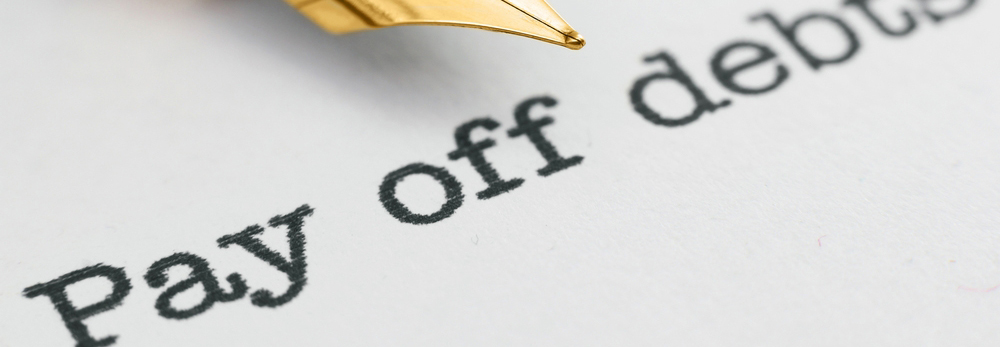


At the intersection of homeownership and financial flexibility lies the Home Equity Line of Credit (HELOC), a dynamic financial instrument that capitalizes on the equity accrued in one’s property.
Defined as a revolving line of credit secured by the value of a home, a HELOC grants homeowners the ability to tap into their property’s equity for various financial needs. Home equity stands as a cornerstone of personal finance, representing a realm of potential financial resources.
We’re taking a look at the intricacies of a HELOC, hoping to empower you with the knowledge and tools needed to make informed financial choices and utilize the full potential of their home equity.
So… What is a HELOC?
A Home Equity Line of Credit (HELOC) stands as a revolving line of credit, allowing homeowners to borrow against the equity in their property. The key distinction lies in its flexibility. Unlike a traditional loan, a HELOC operates as a revolving line of credit, offering flexibility in borrowing and repayment.
One of its primary benefits is the ability to borrow, repay, and re-borrow within a specified timeframe known as the draw period, usually around 5-10 years. This flexibility makes HELOCs ideal for various financial needs, such as home improvements, educational expenses, or emergency funds.
In comparison to other home equity financing options, such as a home equity loan, HELOCs offer lower initial costs, making them an attractive choice for those who need access to funds over an extended period while retaining the freedom to borrow as circumstances change.
How Does a HELOC Work?
A HELOC functions as a secured credit line, utilizing the equity in a homeowner’s property as collateral. With a HELOC, individuals can withdraw funds as needed, up to a predetermined credit limit, offering flexibility as mentioned above.
One notable aspect of a HELOC is its variable interest rates, which means that the interest charged on the borrowed amount may fluctuate based on market conditions. Repayment options for a HELOC often include an initial draw period during which the borrower can make interest-only payments.
After this, borrowers typically enter the repayment phase where they must pay both the principal and the interest, or they might convert the outstanding balance into a fixed loan. The variable interest rates and varied repayment options make HELOCs a dynamic financial tool for individuals seeking access to funds while leveraging their home equity.
Qualifying for a HELOC
When applying for a HELOC, several factors come into play, influencing a borrower’s eligibility. Lenders primarily consider the financial health and creditworthiness of the applicant. Credit score and income are crucial considerations, as they reflect the borrower’s ability to pay the borrowed amount.
A strong credit score and a stable income demonstrate financial responsibility and repayment capacity, which are pivotal in securing a HELOC. Additionally, lenders assess the loan-to-value ratio (LTV), which compares the amount owed on the mortgage to the appraised value of the home.
A lower LTV general increases the likelihood of approval, as it signifies a larger equity stake, providing lenders with greater security against potential losses. Therefore, meeting this criteria is essential for individuals seeking to qualify for a HELOC, ensuring a smoother approval process.
Common HELOC Uses
A HELOC offers a versatile financial solution for various needs, making it a valuable asset for homeowners. One of the most common uses of a HELOC is for home improvement and renovation projects, providing homeowners with a flexible source of funds to enhance their properties.
Individuals can also leverage a HELOC for debt consolidation, combining high-interest debts into a single, more manageable loan, potentially saving on interest costs. HELOCs also serve as an excellent source for financing education expenses, offering an alternative means to cover tuition fees and related costs.
In times of financial uncertainty or unexpected expenses, a HELOC can act as a safety net, providing access to emergency funds. Additionally, for those looking to invest in ventures like real estate or other opportunities, a HELOC can offer quick access to funds based on the equity in their homes, opening doors to potential investments and financial growth.
Overall , the versatility of a HELOC allows homeowners to address various financial needs, making it a flexible and convenient financial tool.
HELOC vs Home Equity Loan
HELOCs and home equity loans are both based on home equity but have key differences. A HELOC operates like a revolving line of credit, allowing borrowers to withdraw funds as needed and pay interest on the amount borrowed.
In contrast, a home equity loan provides a lump sum upfront with fixed interest rates and monthly payments. Home equity loans are ideal for borrowers with specific, one-time expenses, while HELOCs are more flexible and suited for ongoing or variable financial needs.
The choice between a HELOC and a home equity loan depends on your specific financial needs. If you have a specific, one-time expense like a home renovation or medical bills, a home equity loan might be more suitable due to its fixed rates and predictable payments.
On the other hand, if you require ongoing access to funds for variable expenses such as education or investments, a HELOC offers flexibility and may be the better option. Assess your financial goals and needs carefully before deciding which home equity product aligns best with your solution.
How to Apply for a HELOC
Start by researching and comparing various financial institutions and lenders that offer HELOCs. Look for reputable lenders with competitive terms and rates. Consider factors such as customer service, interest rates, and closing costs to find the lender that best fits your needs.
The application process for a HELOC typically involves filling out an application form provided by your chosen lender. You’ll need to provide information about your financial situation, including income, credit history, and the property for which you’re seeking the HELOC. Lenders will also evaluate the value of your home to determine your eligibility and credit limit.
Lastly, be prepared to submit various documents, including proof of income, tax returns, bank statements, and details about your existing mortgage. Lenders will also assess your credit report and require an appraisal of your property to determine its current value. These documents help the lender make an informed decision about your eligibility and the terms of your HELOC.
Tips for Responsible HELOC Management
Keeping a close eye on your credit utilization is crucial when managing a HELOC. Aim to use only a portion of the available credit, as high utilization can negatively impact your credit score and potentially strain your finances. By maintaining a lower credit utilization ratio, you can demonstrate responsible borrowing behavior and keep your credit in good standing.
Effective budgeting is also essential for handling repayments on a HELOC. Plan ahead and ensure you have a clear strategy for repaying the borrowed amount. Setting aside funds in your budget specifically for HELOC repayments can prevent issues and help you avoid missing payments. By integrating this into your budget, you can feel more financially stable and avoid potential pitfalls associated with missed or late payments.
While a HELOC offers convenient access to funds, it’s crucial to avoid excessive borrowing. Evaluate your needs thoroughly and borrow only what is necessary. Remember that a HELOC is a form of debt secured by your home, and overborrowing could put your property at risk. By practicing borrowing conservatively, you can effectively manage your debt, reduce financial stress, and safeguard your home equity.
Final Thoughts
Home Equity Lines of Credit (HELOCs) are powerful financial tools that can empower homeowners to tap into the value they’ve built in their properties for various financial needs. Their versatility and flexibility make them a valuable asset in personal finance, whether for home improvements, education, consolidating debt, or pursuing investment opportunities.
However, with this financial power comes the need for responsible decision-making. It’s crucial to be well-informed and considerate when utilizing a HELOC, as it involves your home as collateral. By making wise and informed financial choices, you can harness the potential of HELOCs while safeguarding your home and financial stability.


